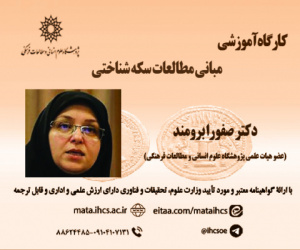تحلیل تطبیقی داستان کشته شدن افراسیاب در شاهنامه فردوسی و متون اوستایی، پهلوی، و نگاره ها بر پای نظریه ترامتنیت (مقاله علمی وزارت علوم)
درجه علمی: نشریه علمی (وزارت علوم)
آرشیو
چکیده
نظریه ترامتنیت ژرار ژنت یکی از دیدگاه های مهم در زمینه بینامتنیت است که به بررسی رابطه پیش متن (متن مرجع) با بیش متن (متن جدیدی که از متن پیشین مشتق شده است) می پردازد. در تاریخ ادبیات فارسی، شاهنامه فردوسی یکی از مهم ترین متن هایی ا ست که بحث ترامتنیت درباره آن مطرح شده است. شاهنامه هم ارتباط بینامتنی فراوانی با متون پیش از خود، به ویژه متن های اوستایی و پهلوی، دارد و هم نقش پیش متن را برای دیگر متن ها، از جمله متن های تصویری مانند نگاره ها، بازی کرده است. در این مقاله، به بحث ترامتنیت در داستانِ کشته شدن افراسیاب در شاهنامه پرداخته شده و این پرسش ها مطرح شده اند: عناصر اصلی داستان مرگ افراسیاب در شاهنامه چیست و روایت شاهنامه با دیگر متن ها درباره این داستان چه شباهت ها و تفاوت هایی دارد و از این متون چگونه به عنوانِ پیش متن در شاهنامه استفاده شده است و، از سوی دیگر، نگاره هایی با موضوعِ داستان کشته شدن افراسیاب تا چه حد از شاهنامه برگرفته شده اند؟ براساس نتایج می توان گفت که، از یک سو، متن های باستانی ایرانی، به عنوانِ پیش متن، نقش مهمی در خلق شاهنامه داشته اند و، از سوی دیگر، خودِ شاهنامه نیز، به عنوانِ پیش متن، تأثیر مهمی بر آفرینش انواع نگاره ها داشته است.A Comparative Study of Afrasiab’s Death in Ferdowsi’s Shahnamé, Avestan and Pahlavi Texts and Miniatures According to the Theory of Transtextuality
Gérard Genette’s theory of transtextuality is a prominent approach in intertextual studies that examines the relationship between a hypotext (the source text) and a hypertext (the new text derived from the source). Ferdowsi’s Shahnameh holds a significant place in Persian literature and has been frequently analyzed through the lens of transtextuality. It maintains intertextual connections with older texts, such as Avestan and Pahlavi works, and has served as a hypotext for many subsequent artistic creations, including miniatures. This article investigates the transtextual relationships in the narrative of Afrasiab’s death in Shahnameh and addresses the following questions: What are the key narrative elements of Afrasiab’s death in Shahnameh? What similarities and differences exist between Shahnameh and other texts on this subject? How are these older texts used as hypotexts in Shahnameh? To what extent are the miniatures depicting Afrasiab’s death influenced by Shahnameh? The findings reveal that ancient Iranian texts serve as vital hypotexts for Shahnameh, and itself has had a substantial influence as a hypotext on the creation of various miniatures related to Afrasiab’s death.







